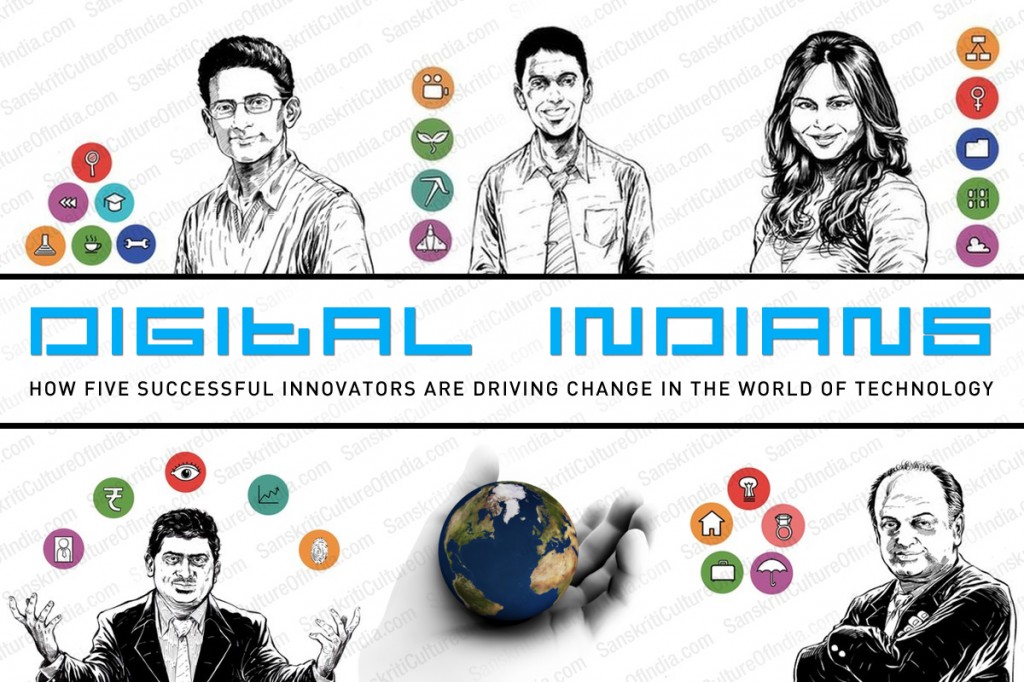[hr]
CLICK ON THE NAMES TO READ MORE
[tabgroup] [tab title=”Ben Gomes“]
NO. 1 – SEARCH GENIUS: The Man Who Oversees Google’s Handling of 100 Billion Searches a Month
What do you do if you get more than three billion queries a day?
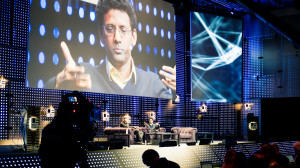 If you are Ben Gomes, Google’s Tanzania-born, India-bred, US-educated vice-president of search, you are responsible for helping to answer all of them – in the shortest time possible, on all devices: desktops, tablets, phones. And now, in the spoken word too.
If you are Ben Gomes, Google’s Tanzania-born, India-bred, US-educated vice-president of search, you are responsible for helping to answer all of them – in the shortest time possible, on all devices: desktops, tablets, phones. And now, in the spoken word too.
“Now search is becoming mobile – on phones and tablets. The challenge is that it is on a small screen, so it’s hard to type”
Search is Google’s raison d’etre and cash cow, bringing in a bulk of its $50bn (£33bn) revenues last year. It is also, says Mr Gomes, “about having a continuous conversation with the user to find out what he wants”.
For a change, we are having a conversation with Mr Gomes, the boy-like 45-year-old guru of search in Googleplex, the funky low-slung company headquarters set in the manicured greens of Mountain View, California.
Mr Gomes works out of an untidy cubicle with four other top engineers in Building 43, the Mecca of search. There are papers strewn around, a headphone lies idly on his table and numbers are scribbled on a whiteboard.
Wrapped around the thin walls near his standing workstation are posters of Russian abstract artist Wassily Kandinsky’s work.
From his modest lair, Mr Gomes and his team work relentlessly on their fine-tooth comb search of the worldwide web to serve up the popular search engine, which is now a part of our everyday lives.
“When I joined Google in 1999, search was about basically finding the words that you search for in a document. Then we took this view that we were going to understand what you want and give you what you need,” he says.
Today, crawling through more than 20 billion pages a day on the continuously expanding world wide web, Mr Gomes and his army of search – a substantial number of the company’s 44,000 employees – use algorithms in an attempt to make search intuitive, multimedia and super smart.
The “maths that computers use to decide stuff” – as algorithm expert Kevin Slavin called it once – helps rank pages in order of their importance, identifies spelling errors, provides alternatives to words, predicting auto-complete queries, and does unified searches using images, audio and video and voice.
They also try to delve into the deeper meaning of words searched for – “less ‘searchese’ and more natural language”, as one employee tells me – and recognises words with similar meanings.
And then, with a hint of understated pride, Mr Gomes talks animatedly about Knowledge Graph, a new function launched last year to make the site’s algorithms “act more human” in an attempt to offer instant answers to search questions. Time magazine called it the “next frontier for search”.
“It’s a database of all things in the world. It pulls together different databases and unifies them into a single coherent one that has about 500 to 600 million people, places and things in them and about 18 billion attributes and connections between those things,” he says.
But some sceptics like independent technology columnist Mala Bhargava believe there are some pitfalls.
“Google does a great job of evolving search continuously, slipping in new features all the time. But innovation always walks a tightrope between being useful, even prescient, and being so excessively personalised and targeted as to be meaningless,” she says.
But folks at Google believe the fact that it handles a mind-boggling 100-billion plus searches every month, or over three billion a day is testimony to its popularity. A good 15% of the search questions it sees every day are new – queries it has never answered before.
Then there’s the giddy speed of search.
When Mr Gomes joined Google in 1999 after a stint in Sun Microsystems working on Java programming language, some searches could take up to 20 seconds. When I keyed in Ben Gomes on Google recently it spat out 19,000,000 results in .28 seconds. (Most of the top ranked results were about the search guru himself.)
Chemical interest
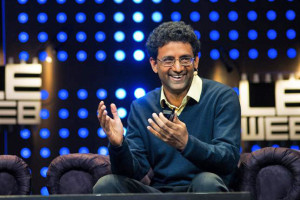
What the search on Mr Gomes possibly will not tell you is that as a young boy growing up in Bangalore, he was more fascinated with chemistry than computers in the beginning.
So much so, he recounts, that one day he picked up some sulphuric acid from a city shop, and walked into his school, “swinging the bottle in my hand, so happy”.
But then he went to a school with classmates like Krishna Bharat, a computer fiend who later become the man behind Google news, and which counted Sabeer Bhatia, founder of Hotmail, among its students.
So when his brother bought him a small microcomputer in 1983, young Ben joined a small bunch of people interested in machines in what then still was a technophobic country.
Mr Gomes, son of a car distributor father and a school teacher mother, moved to the US 25 years ago. He went to Berkeley, where he picked up a PhD in computer science.
And then the internet happened.
It was about that time his classmate Krishna Bharat told Mr Gomes about Google, and he joined this relatively unknown company “because it would make this content available to the world through a really good search”.
The rest is search history.
Presidential search
What is the next frontier of search, I ask Mr Gomes, before heading for a meal at the Indian curry station at Googleplex.
“Now search is becoming mobile – on phones and tablets. The challenge is that it is on a small screen, so it’s hard to type. The opportunity is that it’s got a really good microphone and a touch screen.
“It can enable a new kind of interface. So we realised we want to build an interface that was much like the way you talk to some person and ask a question,” he says.
And then, with a gleam in his eyes, Mr Gomes picks up his HTC smartphone and barks a series of questions into the Google search app.
“Who is the president of India?” he asks.
“Pranab Mukherjee,” promptly answers a woman’s voice.
“How old is he?” Mr Gomes prods on.
“He is 77 years old,” she answers, loud and clear.
“This is cool isn’t it?” says Mr Gomes.
“And it’s going to get better and more intelligent.”
[/tab] [tab title=”Nandan Nilekani“] NO. 2 – THE ID MAN: How Nandan Nilekani gave a unique number to 400 million people
When Nandan Nilekani began working on providing a unique identification number to half of India’s billion-plus people four years ago, he ran into a wall of problems.
The main criticism was that 120bn rupees(£1.72bn; $1.89bn) project was also the world’s biggest biometric exercise.
Not surprisingly Mr Nilekani, info-tech whizz turned head of the Unique Identification Authority of India, faced tough questions over access and misuse of personal information, surveillance, profiling, securing of confidential information by the government and threats of budget cuts. A parliamentary panel even trashed the idea, saying it would be “misused”.
Four years on, Mr Nilekani – the famous co-founder of Infosys, the $7bn Indian info-tech behemoth – believes he has been able to allay such fears.
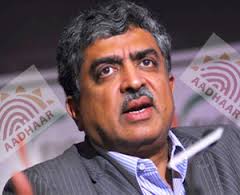 Enormous Roll-out Since the project began in 2009, some 500 million Indians have enrolled at 25,000 centres across the country to get a 12-digit unique identification number – called Aadhaar or foundation. Some 400 million people have been already issued an ID. The goal is to enrol 100 million more people by 2014.
Enormous Roll-out Since the project began in 2009, some 500 million Indians have enrolled at 25,000 centres across the country to get a 12-digit unique identification number – called Aadhaar or foundation. Some 400 million people have been already issued an ID. The goal is to enrol 100 million more people by 2014.
Mr Nilekani says 10 of India’s 28 states are already using the ID to transfer government pensions, scholarships, wages for a landmark jobs for work scheme, and subsides for cooking fuel to targeted recipients. Some states are using the number to distribute cheap food to the poor, plugging distribution leakages and checking for corruption.
This, Mr Nilekani believes, is transformative in a country where only 58% of children are registered at birth and 40% of people in villages do not have bank accounts.
“A lot of attention has been made to design the ID so that it doesn’t become a massive data collector. It’s a simple ID system that protects the residents,” Mr Nilekani says.
It’s been a long, strange trip for him.
When he became a part of a team to fix governance systems in the city of Bangalore a decade ago, he pointedly avoided talking about info-tech as a means to solve complex public problems.
It was Mr Nilekani’s first foray into the “public sphere” and as the famous co-founder of Infosys, he was sheepish about flaunting his credentials.
“I was wary of being labelled a ‘computer boy’ who saw every problem as something that could be solved by writing a piece of code.
“After all, what do computers and software have to do with clearing garbage or provide soft drinking water?” Mr Nilekani wrote in Imagining India, his well-received 2008 book on how to “drive change” and shape a renewed idea of India.
How times change.
Sitting in his office, Mr Nilekani speaks about the need for an ID to change India with a brisk, evangelical flair.
“In the West, IDs are taken for granted. In India, things are different. You have millions of people who have no ID and no acknowledgement of their existence. They can’t open a bank account, they can’t have a mobile phone connection. It’s an identity divide,” says Mr Nilekani.
So how does the 58-year-old Bangalore-born info-tech billionaire – worth $1.3bn according to the Forbes rich list, making him one of the wealthiest Indians – work in the government, where the pace of change is usually glacial, and change itself can easily get embroiled in partisan politics?
For one, with its sleepy-looking offices peopled by taciturn bureaucrats and their armies of attendants, the government of India is a world far removed from the gleaming and energetic Infosys campus, Mr Nilekani’s former workplace.
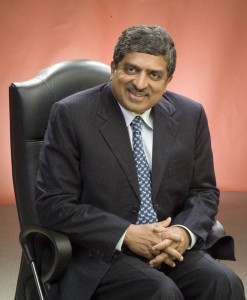 No spitting Mr Nilekani’s office is a cosy, functional place with a cramped bookshelf, a big screen TV, a laptop, and papers and magazines strewn around. A blazing blue-flame “fly trapper” on the floor helps to keep the pests away.
No spitting Mr Nilekani’s office is a cosy, functional place with a cramped bookshelf, a big screen TV, a laptop, and papers and magazines strewn around. A blazing blue-flame “fly trapper” on the floor helps to keep the pests away.
A computer-generated paper warning in the men’s toilet on the same floor is a sobering reminder of curious challenges. “Do not spit tobacco in wash basins/urine pots”, it says.
But, more seriously, says Mr Nilekani, his four years in government has taught him patience and the art of consensus building.
“In the private sector, business takes a decision, you discuss it with your management team, get the approval of the board, go to shareholders, convince your analysts and so on. That’s about it,” he says,
“In the public sector, it an entirely different ball game – you deal with the government, parliament, bureaucracy, judiciary, activists, journalists. Then there’s the federal structure – central government, state governments, local bodies. You negotiate all this and still get something done.”
Working with the government and facing flak from opponents made Mr Nilekani also realise the “metric” of success in government is vastly different from that in business.
“In business, you are measured by revenue, cost control, profitability, new products, earnings per share, growth. The language of performance is identical no matter what the product is,” he says.
“In the government, what is success?
“Somebody who believes in the ID programme will say I am successful if I can get it done. But somebody who does not believe in it will say no matter what I do I am not successful. The success in government is linked to the ideology of how you see the world.”
Starting young In many ways, that has been the story of Mr Nilekani’s life.
When he was 12, his father, a textile mill manager in Bangalore, sent him away to stay with his uncle in the small town of Dharwad. He says he grew up fast, living independently from his parents at an early age. At home, he listened to his father and uncle, both intensely political creatures, sparring on public issues. It was, he says, a lesson in public engagement.
He went to India’s top and fiercely competitive engineering school, got on to its quiz team, led the students’ group and became, he says, “a well-rounded person, developed lots of social skills, became street smart and learnt to negotiate”.
All this, Mr Nilekani believes, helped in his three decades with Infosys. He met global customers from a variety of industries, and constantly studied customers to see how he could “make a difference using technology”. At Infosys, he led a group that designed banking software which is used all over the world now.
Mr Nilekani explains how you can measure success When he left the company in 2009 it had grown 50% and made him infinitely richer, “a genial billionaire”, as the New Yorker magazine called him once.
“You know,” he says, “I flourished not so much in technology for technology’s sake, but in its application and use in solving large, complex problems for public good.” That’s what, he says, he wants to keep doing after his work with the ID project ends next year.
At work, he jokes that he would not be entirely displeased to be compared with Michael Bloomberg, New York mayor and business magnate. At home, he says, he is reminded of his limitations.
“My wife says I am a very poor electrical engineer,” he says with a wry smile. “I can’t even change a light bulb.”
[/tab] [tab title=”Rikin Gandhi“] NO. 3 – POP IDOL FOR FARMERS: A Social Entrepreneur who Helps Farmers Make Videos
For someone who has become an authority on how to make the most of the ground, Rikin Gandhi spent a lot of his youth looking up at the stars.
Growing up in a New Jersey suburb, the son of an electrical engineer father and a bank cashier mother would cut out articles on astronauts from the Philadelphia Inquirer and devour space biographies.
After school, Rikin chased his dreams relentlessly.
He applied for a pilot’s job with the US Navy to get on to the space shuttle programme. A minor eye problem which needed corrective laser surgery came in the way, and he ended up spending a couple of years working on a software project with Oracle and reflecting on a future in space.
 Earth overview “I wondered what happens to astronauts when they return to Earth. I reread their biographies and found that some of these guys would see the world from above and ask themselves, why is there war, why is there poverty? On return, some became public school teachers or farmers to reconnect with the real world,” says Mr Gandhi, now 31.
Earth overview “I wondered what happens to astronauts when they return to Earth. I reread their biographies and found that some of these guys would see the world from above and ask themselves, why is there war, why is there poverty? On return, some became public school teachers or farmers to reconnect with the real world,” says Mr Gandhi, now 31.
It turned out to be a prescient epiphany of sorts.
The aspiring astronaut returned to his parents’ homeland. Firmly grounded, he is now working with farmers in India’s teeming villages and trying to improve their lives.
What Mr Gandhi and his 65-member team do at Digital Green, an independent, non-governmental organisation (NGO) that he heads, is simple: train farmers to make and show short videos where they record their problems, share solutions and highlight success stories.
They provide farmers with nifty $200 (£130) handheld, battery-operated, small, handheld pico projectors to show the videos to small groups of people in electricity-starved villages.
By all accounts, this plain vanilla innovation has been a resounding success.
In five years since it started, says Mr Gandhi, more than 150,000 farmers have watched 2,600 such videos in 20 different languages in more than 2,000 villages in seven states where Digital Green has a presence. More than half the people watching these videos and putting lessons learnt from them into practice are women.
“The videos are by the farmers, for the farmers. They are demonstrative, have interviews and are often laced with local music.
“They showcase the farmer as the protagonist, producer and exhibitor, increase their status and empower them with new tools. More importantly, they help in sharing farming technologies,” says Mr Gandhi, sitting in a cramped conference room in his office in Delhi.
“We call the videos the Pop Idol for farmers,” he says, with a grin.
The eight to 10-minute videos try to answer elementary questions that often cloud farmers’ minds: How do you select a crop? How do you prepare your land and nursery beds? How do you transplant crops? How do you remove weeds to get a healthier crop?
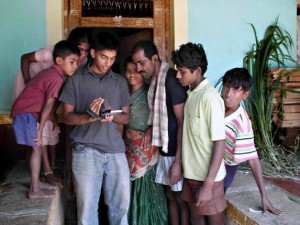 Films about worms The most popular videos, says Mr Gandhi, are the ones where farmers are able to draw lessons from experiences with limited financial risks.
Films about worms The most popular videos, says Mr Gandhi, are the ones where farmers are able to draw lessons from experiences with limited financial risks.
Videos about cultivating azolla, an aquatic fern which added to cow fodder increases milk yields, are a hit as are videos on using worms to make compost to fertilise crops. Videos on high-yield rice cultivation and organic farming are equally popular.
There are a lot of things we take for granted in the West: strong institutions, finance, infrastructure, capital. You can’t always find that in India”
Mr Gandhi says they have a vigorous system of mapping outcomes. “About 40% of the people who have seen a video in the last two months,” he says, “are found to have adopted one of the practices shown in the video.”
When you consider the fact that more than half of Indians living in its 60,000 villages are employed in agriculture, and that farms contribute some 14% to India’s gross domestic product, you realise the transformative potential of Mr Gandhi’s project.
Mr Gandhi came to India first with a friend to grow jatropha to make biodiesel, a project which flopped. He ended up being hired by Microsoft Research and spent time in villages finding out whether people were receptive to technology.
Somewhere, in between, he even went back to the US to do a doctorate in sustainable development at Columbia University, but “dropped out after a semester mainly because it was very theoretical”.
“I thought I’d take a shot at the real thing on ground,” he says.
So when he arrived in an Indian village to work on training farmers to produce farm videos, he says he had no expectations and presumptions.
Tech to help poor “It was all very new to me. What confused me was there were farmers who were doing well next to folks who were not doing well. But then that’s the case everywhere, isn’t it?” says Mr Gandhi.
Digital innovation in the developing world, he believes, has to reach out to the poor trying to make sense of their lives.
“There are a lot of things we take for granted in the West: strong institutions, finance, infrastructure, capital. You can’t always find that in India.
“So it is important to work with existing organisations, governments, NGO [non-governmental organisations], private sector, self-help groups to make technologies work.”
Which is what Digital Green does: Mr Gandhi’s venture has been supported by Bill and Melinda Gates Foundation and the government of India, among others.
Mr Gandhi, who loves reading sci-fi in his free time, says he’s fortunate to see “changes first hand”. And no, he says, he does not fret about not becoming a spaceman.
“You know, what,” he says, “[for all purposes] the space programme is no longer functional, is it?” Then he chuckles a little more.
[/tab] [/tab] [tab title=”Ruchi Sangvi“] NO. 4 SELF-ENGINEERED SUCCESS: The Rise and Rise of Facebook’s First Female Coder
Ruchi Sanghvi came from a family of entrepreneurs
When Ruchi Sanghvi arrived at the Facebook office in California for a job interview in 2005, she found a menu card outside saying: “Looking for engineers.”
The start-up was located above a Chinese restaurant in downtown Palo Alto. It was a modest-looking place filled with gawky engineers, black sofas, lava lamps, and walls covered with murals and movie posters.
Earlier that year, the computer science engineer from Carnegie Mellon University had fled a job with a bank on Wall Street after three weeks. “I had panicked. I wanted to be in a business that was dependent on my core skills,” she says.
She had flown out to California, been interviewed by Oracle and started out there, when a friend had told her about Facebook.
“I didn’t know much about them. I didn’t even know that they had moved to California. I thought they were still in Boston working out of Harvard dorm rooms,” she says wryly.
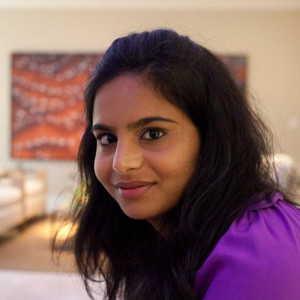 Scooter culture We are sitting in the hip Dropbox office in downtown San Francisco, where Ms Sanghvi, 31, works as a vice-president of operations.
Scooter culture We are sitting in the hip Dropbox office in downtown San Francisco, where Ms Sanghvi, 31, works as a vice-president of operations.
Employees at the online storage firm whizz through corridors on skates and office scooters, some take time off to play pool and video games, and a plush music room is ready for a karaoke contest.
But, for the moment, we are talking about how Ms Sanghvi got the job at Facebook and became its first female engineer.
“When I started out in Facebook, it had only 20 people. I saw it grow to a thousand employees and from five million users to over a billion users. I saw it evolve from a service that served college students to one that served the world,” she says.
“It was extremely chaotic, but it was a wonderful experience. I learnt everything there.”
At Facebook, she was part of the team that developed the news feed.
How was it, I asked, being the first female engineer at Facebook?
Ms Sanghvi says she was used to being in a minority: at engineering school, she was one of the five female students in a class of 150.
But at Facebook, she says, she truly came into her own.
“You had to be opinionated, you had to make sure your point of view was heard, you had to ask questions. Sometimes people would tell you were stupid and you’d start all over again,” she says.
“But it was, by and large, a meritocracy. It had one of the best environments for learning.”
Facebook was also where she met her future husband, who was the first Indian engineer the company had hired.
I ask her for a story about Mark Zuckerberg, one of the founders and chief executive. She frowns, thinks hard, and says she doesn’t quite like talking about Mr Zuckerberg. Then she relents.
It’s a story about how the news feed launch outraged users and nearly killed it.
“We had less than 10 million users when news feed arrived. Mark was at a press conference [announcing it] and over a million users began protesting against it,” she says.
Last year, Ms Sanghvi spoke about the time in vivid detail.
“Groups with names like ‘I hate Facebook’ and ‘Ruchi is the devil’ had been formed. People camped outside our office and demonstrated. But we realised the very people who hated it were able to spread the word because of the news feed,” she told a talk.
But Mark Zuckerberg stuck to his guns, Ms Sanghvi tells me.
“Typically in any other company if 10% of your users decide to boycott a product you are obviously going to reverse the changes or do something about it. But Mark was really adamant about his vision about the potential of news feed.”
When Ms Sanghvi left Facebook in 2010 after an itch to start her own company, the social networking site had more than 1,500 employees and more than 500 million users.
As a young girl growing up in India’s industrial city of Pune, she had dreamt of taking over her family business.
Her father, a second-generation businessman, runs a heavy engineering company. Her grandfather ran a stainless steel business. “We are an entrepreneurial family,” she says.
But now, she was in the US, having studied computer science and worked at Facebook. The world beckoned.
So she went ahead and set up her own company, Cove, with her husband in 2010. There, helped by a team of engineers, they made “collaborative software” for communities and networks.
“The journey from employee to entrepreneur was a complex and taxing one for an immigrant like me,” says Ms Sanghvi, who has been lobbying US authorities to ease immigration laws.
“When I started Cove, I spoke to three immigration lawyers who gave me a long checklist of things to do before my company could hire immigrants.”
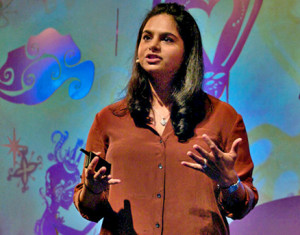 Diverse roles Two years later, in February 2012, Cove was bought by the cloud-sharing service Dropbox.
Diverse roles Two years later, in February 2012, Cove was bought by the cloud-sharing service Dropbox.
At Dropbox, a six-year-old company with more than 175 million users, Ms Sanghvi has diverse roles. She has led hiring – “only great people can make great products,” she says – and managed marketing and communications.
I ask her if she plans to do anything back home in India.
“I’d love to do something if it was easier to do it. It is difficult to do exciting things in India. There are a lot of issues and barriers, simple things like a good internet line to the office,” she says.
“It doesn’t seem as easy as Silicon Valley where you have an idea you can simply execute it with hard work. But I admire folks who are doing things in India. It requires a lot of grit and determination.
“You know I think I have had it pretty easy here in the US actually,” she adds, with a laugh. Then she skates away for her next meeting.
[/tab] [/tab] [tab title=”Sanjeev Bikhchandani“] NO. 5 – JOB HUNTER: The Man Behind India’s Most Successful Web Business
From his school days, Sanjeev Bikhchandani was clear that he would not want a job. Which is ironic, for a man responsible for helping more than a million Indians find jobs.
Now he is India’s most successful digital entrepreneur, running the country’s top job site, which has inspired the way other sites work. He says it was, in the end, about the choices he made.
He got into India’s top engineering school, and turned it down for economics at Delhi’s St Stephen’s College because “it was a shorter course”.
After business school, he joined a multinational company. Two years later, when he got comfortable there, he quit.
His government-doctor father, a middle-class neighbourhood, a public-school education, all prepared him for a job. Instead, he set up a business from a dining-room table, before moving his office to a servant quarter.
Today, Info Edge is the most profitable web business in the country. With 2,500 employees, it runs India’s top job site, Naukri (which means “job” in Hindi), and other websites spanning real estate, matrimony, and education. His 34% share gives him a net worth of more than 11bn rupees (£109m; $174m).
Mr Bikhchandani says successful businesses are “based on deep customer insight”. Working at that multinational, he’d seen colleagues reading business magazines back to front. “There were 40 pages of job ads at the back,” he says. “Job ads were hotter than news or features.”
That insight was still with him when he stumbled upon the internet at a trade show in Delhi in 1996.
“I saw a tiny stall with the sign ‘WWW’. I was intrigued. The man there said: ‘This is email’. I lost interest. Who would I send email to?”
That email reseller then showed him the internet. “He took me to Yahoo and searched for India. And I said, this is where I can put up job listings.”
Naukri.com launched March 1997. Mr Bikhchandani’s brother, a professor in California, pitched in with the $25 (£16)monthly fee for a web server.
The job site took off. From 240,000 rupees in first-year revenue, it jumped sevenfold next year. “We were onto something big,” he says. “We stopped everything else and focused on Naukri.”
The site would list jobs from newspapers. People began to apply to companies saying, “I saw your job on Naukri.com”, and HR managers began to call. He would offer to put up new jobs for 350 rupees (£3.50; $5.55), or unlimited jobs in a year for 6,000 rupees (£60; $95). And they began to pay up.
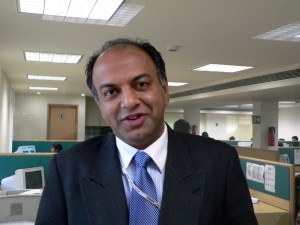 Prudent working Naukri ran in “boot-strap mode” for a few years, working with its own funds. “We were frugal,” says Mr Bikhchandani. “Then in 1999 we began to get calls from investors saying, ‘We want to give you money’. I was baffled.”
Prudent working Naukri ran in “boot-strap mode” for a few years, working with its own funds. “We were frugal,” says Mr Bikhchandani. “Then in 1999 we began to get calls from investors saying, ‘We want to give you money’. I was baffled.”
At first, he declined. Then came competition, flush with venture funds. “Their launch ad campaign cost was twice our annual turnover. The game had changed. We could be wiped out. We went back to the investors.” He got his venture capital two weeks before the big dotcom crash.
Info Edge made losses for two years after that. “That was planned. Then we broke even on a much higher turnover. We grew 30-fold in three years, and now we were making a profit.” The company listed with an initial public offering in 2006.
Mr Bikhchandani convinced others to abandon multinational jobs and join him. “People come if they believe in you,” he says.
Those believers included Hitesh Oberoi from Hindustan Lever, now Naukri’s chief executive officer. Mr Bikhchandani has stepped aside to turn to his first love, start-ups.
“I’m not a big-company guy,” he says. “I’ve been able to finally get back to working with start-ups. I enjoy talking with young entrepreneurs. They have fresh ideas and are often smarter than me, so I learn stuff from them. Sometimes, I can help them.”
Outside Info Edge, Mr Bikhchandani is busy with Ashoka University, a not-for-profit venture co-founded by 10 entrepreneurs. Ashoka offers a four-year liberal-arts undergraduate programme on the American model, and the dream is big. “We want to build an institution that can be cloned, to transform college education in India,” he says.
 Fear of failure At the end of the hour-long chat, I realise the word he’s used most often is not among ones favoured by entrepreneurs: innovation, funding, growth. It’s frugal.
Fear of failure At the end of the hour-long chat, I realise the word he’s used most often is not among ones favoured by entrepreneurs: innovation, funding, growth. It’s frugal.
India’s top digital entrepreneur lives that word. He upgraded his old Opel Astra to a Honda Accord after years, and he sits in a compact, cosy office. Info Edge’s eight-storey headquarters is big, but the flavour is frugal and functional.
He uses the word again when I ask him about failure. “Fear of failure is good,” he says. “It keeps you on your toes, it makes you work harder to succeed. But if you fail, and you were frugal, you can start again.”
And yet, through all his ups and downs, and his years without a salary, didn’t he ever feel like quitting?
“Never,” he says. “You’re not a failed entrepreneur until you quit. As long as you have your hat in the ring, you haven’t failed. You’re just… not successful yet.”
[/tab] [/tabgroup]

